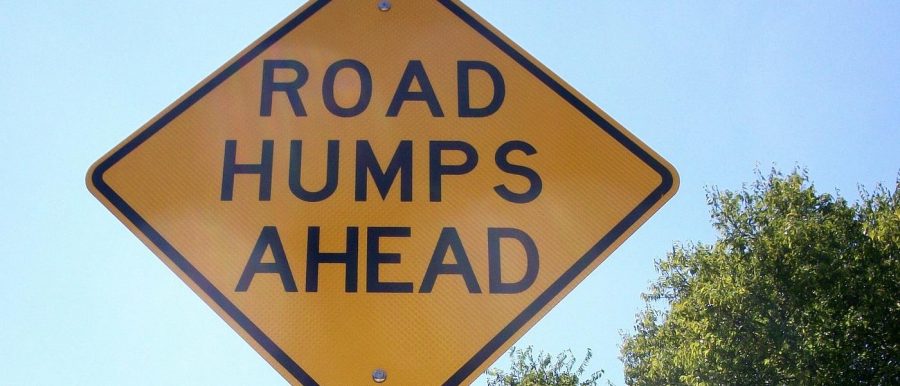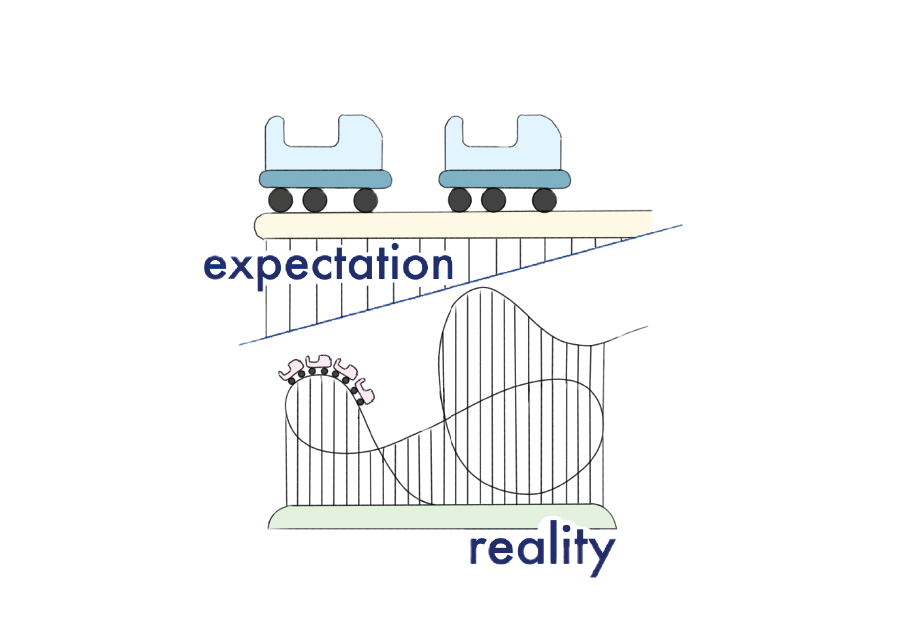Ah, yes. Tuesday morning.
The sun was shining, the birds were chirping, and I was in a relatively good mood, considering that it was the first day back to school after holiday break.
And then I hit the (car) roof.
Alas, unbeknownst to any of the students, three mysterious speed bumps were paved into student parking over the break, causing for an even dangerous trek every day. And these weren’t any normal bumps: they were approximately (give or take) the size of Mount Kilimanjaro, an upward battle to get into the parking lot every day.
I watched as car after car bumped and squeaked and rattled against the speed bumps. Girls emerged from their cars, rubbing their heads and checking the scrapes on the bottom of their cars. How ironic: the device intended to enforce safety had ended up endangering us.
Not only were they in seriously inconvenient locations, but also quite frankly, despite any jokes, they really were too high. I had heard countless stories from fellow seniors who have low riding cars: their bumpers scraped against these obstructions and they could barely make it over the bump—who knows what damage they could have been doing to motor vehicles?
After some investigative journalism, it was deduced that the speed bumps could not be over 4 inches tall. As plans were finalized to bring tape measures to school the next day to measure them, some speed bumps had mysteriously disappeared, less than a week after their first debut.
While many seniors lauded the removal of a speed bump, the disappearance raised another question– why were they put in the first place?
There’s the obvious answer–it was undeniable that cars tear into parking lots, narrowly avoiding underclassmen undertaking the journey from over-over flow. But after speaking to security, it was evident that there was another factor in play–the safety of the people who protect us every day.
Before these speed-breakers were put in place, students had side swiped security with their mirrors, needlessly endangering them. The bumps not only force the students to be mindful of their speed, but they also act as an audio cue for security to recognize the presence of incoming cars that they cannot see–an ingredient vital to parking lot safety.
So yes, it’s easy to complain endlessly about these types of things, but I would encourage everyone to think of why the policies were implemented and to ponder them fairly and judiciously. Because more often than not, they have a real reason behind them–no matter what you think, security does not have personal vendetta against the car, and the bottom line? Safety is key to everyone’s success.
(And yes, the rumors are true–the speed bumps are being lowered over the weekend!)
Commentaries are the expressed opinion of the author and do not necessarily reflect that of The Fourcast staff, its adviser or any member of the Hockaday community.













